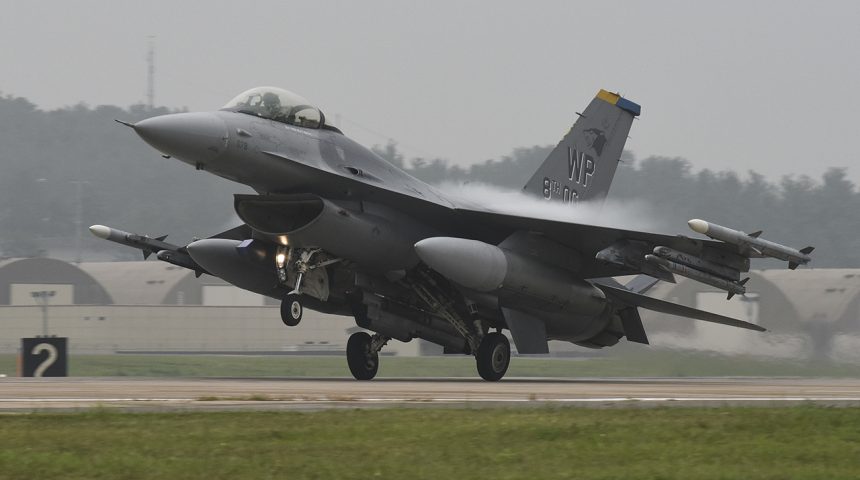It’s the third U.S. F-16 crash in less than 2 months.
A U.S. F-16 Fighting Falcon (nicknamed “Viper” in the fighter pilots community) crashed near Kunsan Air Base, South Korea, around 3:30PM LT. The jet was approaching the runway at the airbase to perform what the Air Force defined a “routine landing” when the pilot was forced to eject for reasons that have not been disclosed yet. The F-16 pilot landed near the base suffering minor injuries, and was taken to a medical facility.
The 8th Fighter Wing commander has suspended all military and civilian flying operations to ensure the safety and security of people and assets.
Kunsan Air Base, Republic of Korea, is home to the 8th Fighter Wing, known as the “Wolf Pack.” Located seven miles west of Gunsan City, the base is on the west coast of the peninsula near the Kum River estuary. The 8th Fighter Wing is the base’s host unit and is assigned to Seventh Air Force at Osan Air Base, Republic of Korea. The numbered Air Force falls under Pacific Air Forces headquartered at Hickam Air Force Base, Hawaii.
Two squadrons, equipped with F-16CM and F-16DM, operate at Kunsan AB as part of the 8th FW: the 35th Fighter Squadron and the 80th FS.
While “a board of officers will investigate the incident” it’s worth noticing that this is just the last in series of crashes of U.S. F-16s across the world: an F-16 assigned to the 49th Wing out of Holloman Air Force Base crashed during an evening training flight on Oct. 29, 2019. The pilot successfully ejected before the impact. That was the second incident in less than a month. Indeed, at the beginning of October, another F-16 crashed near Spangdahlem AB, Germany. The pilot ejected safely. Earlier this year, on May 17, 2019 another pilot successfully ejected from his F-16 before crashing into a large warehouse building on landing at March Air Reserve Base in Perris, California. That crash exposed several people on the ground to debris and to risk of hydrazine, a colorless, highly toxic and highly inflammable liquid that feeds the electrical systems and the EPU (Emergency Power Unit) in case of engine failure.
Two USAF F-16s crashed last year, including a fatal accident involving the U.S. Air Force flight demonstration team, The Thunderbirds that occurred on April 5, 2018. The other USAF F-16 accident in 2018 happened when an aircraft overran the runway on emergency landing and the pilot ejected safely at Lake Havasu City Airport in Arizona on April 24, 2018.
The General Dynamics (now Lockheed Martin) F-16 Fighting Falcon involved in today’s mishap was a single-seat version. The aircraft began production in 1976. More than 4,600 F-16s have been built in many versions, including several two-seat variants. Production of updated versions of the F-16 continues for import customers. The aircraft can be characterized as one of the most successful combat aircraft in history, with extensive use in conflicts around the world. The F-16 is in service with approximately 26 nations.









